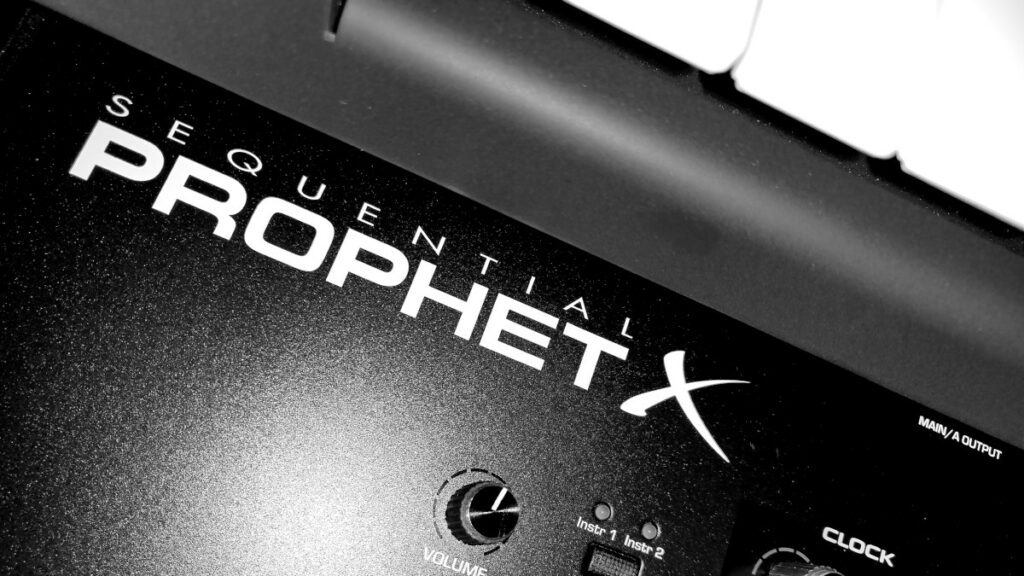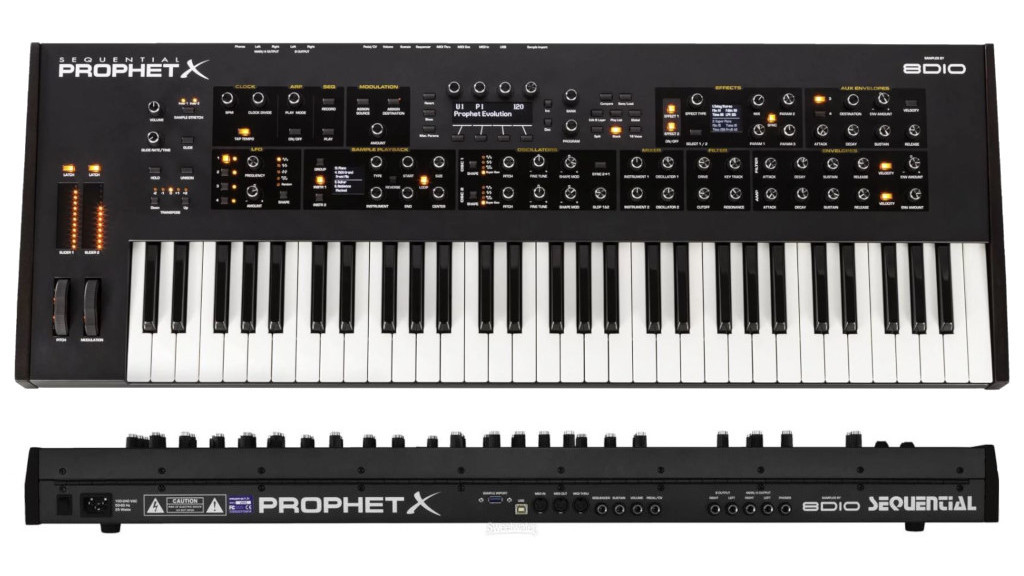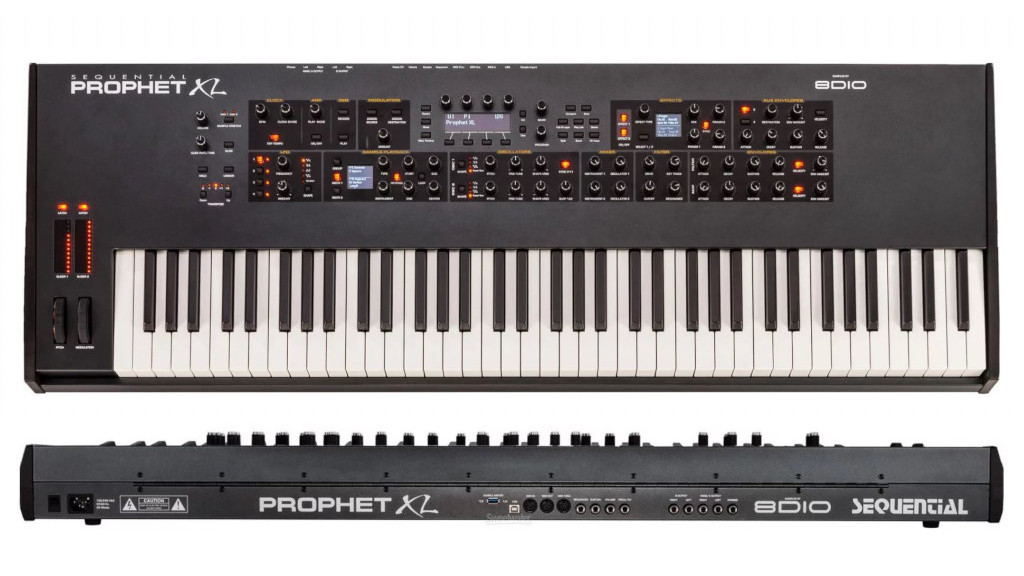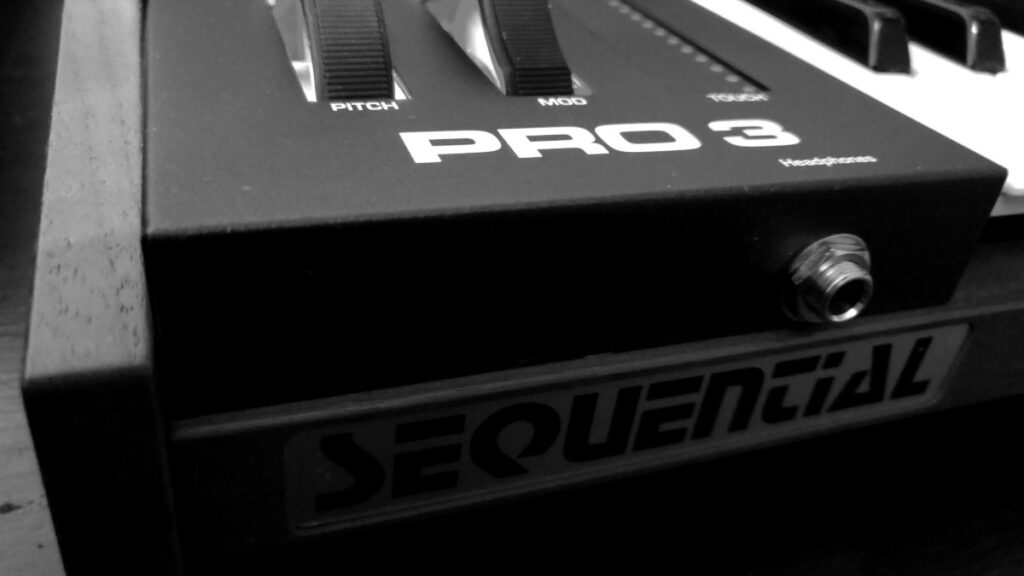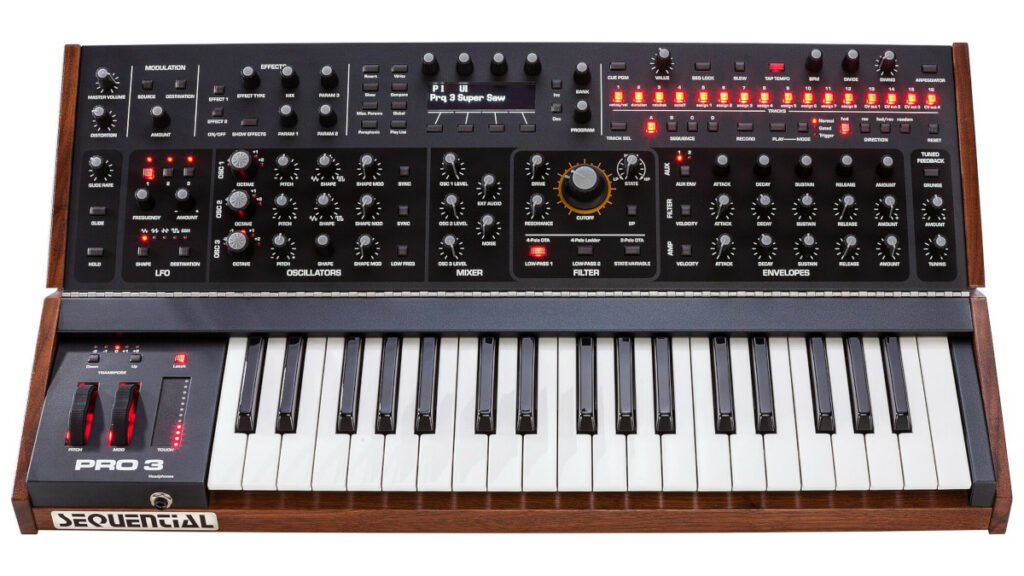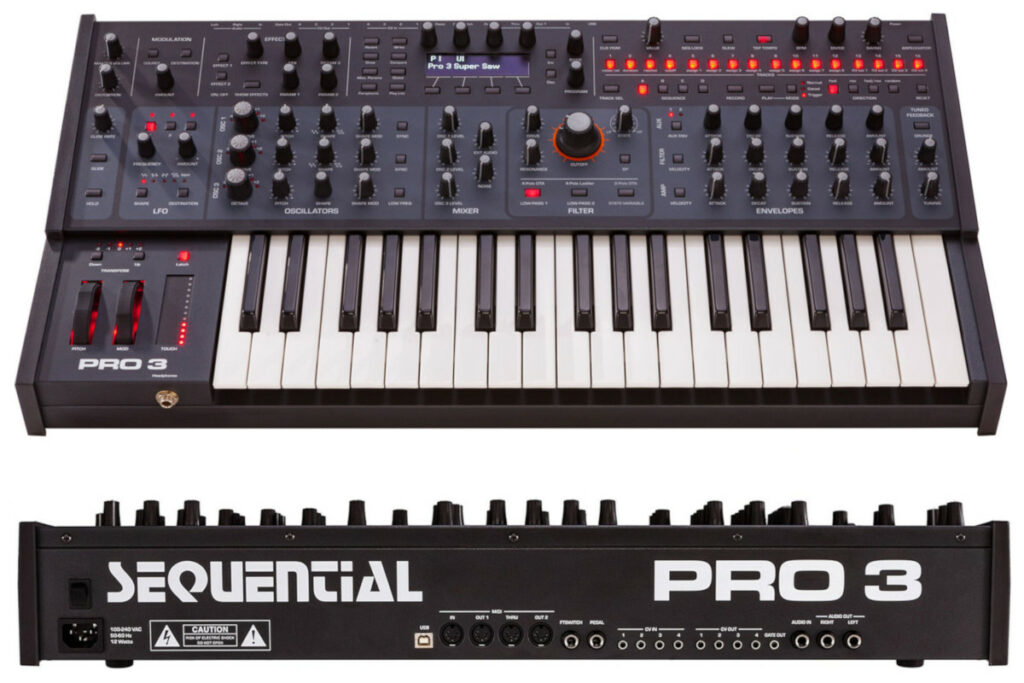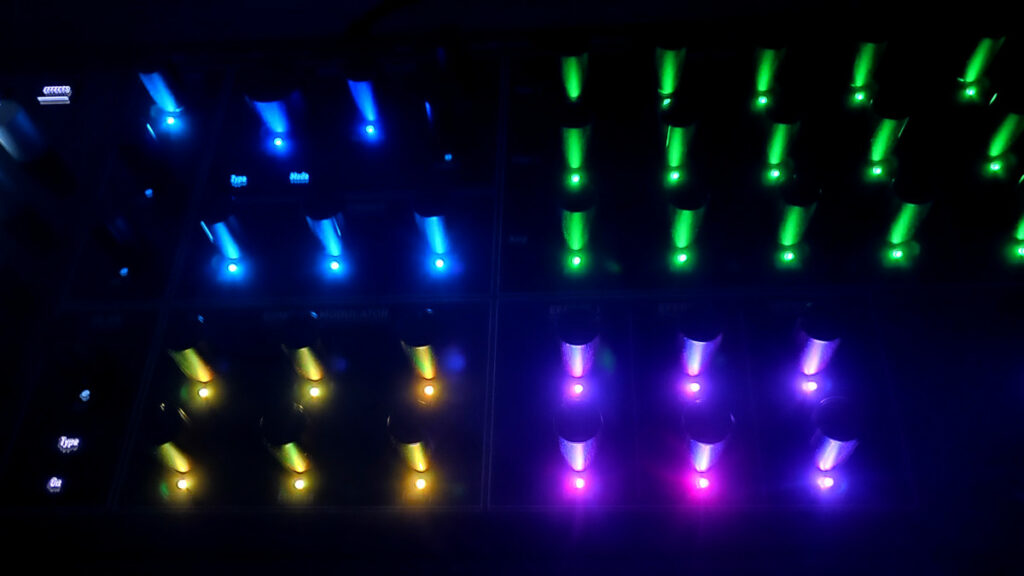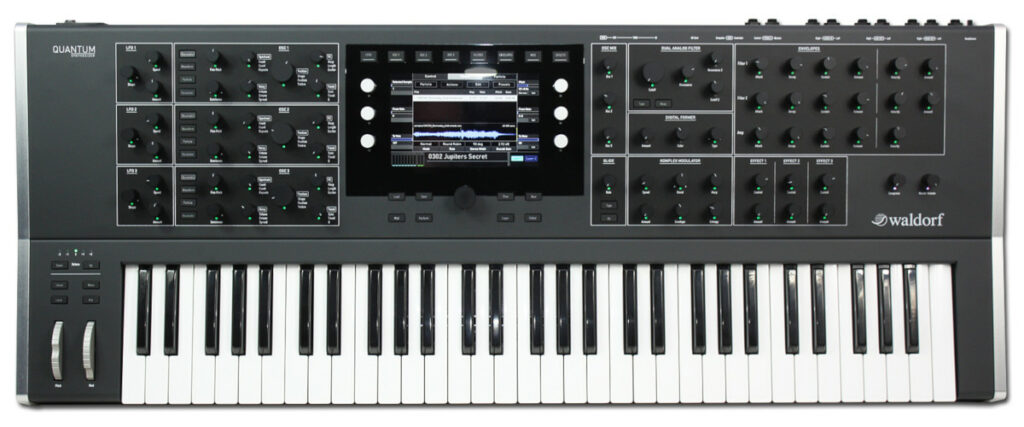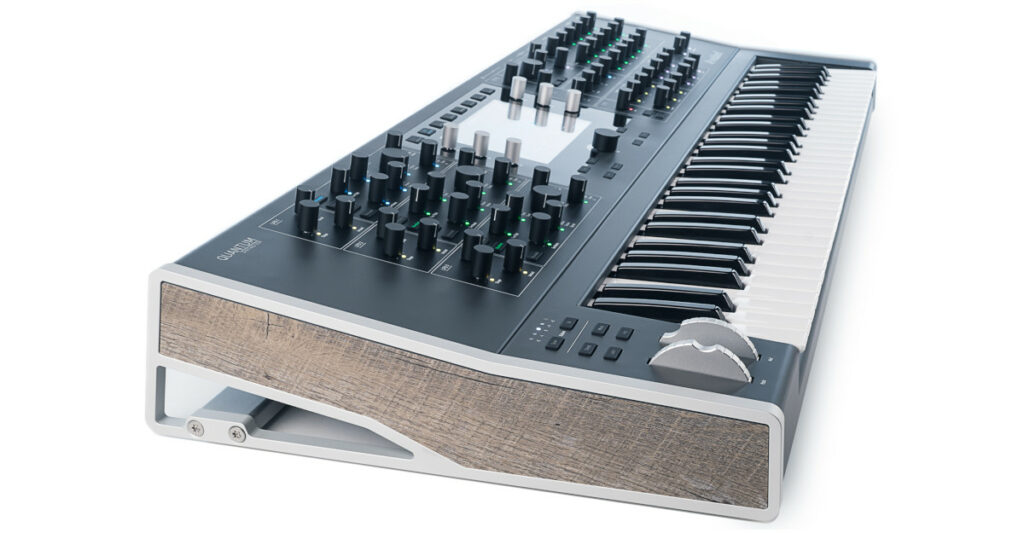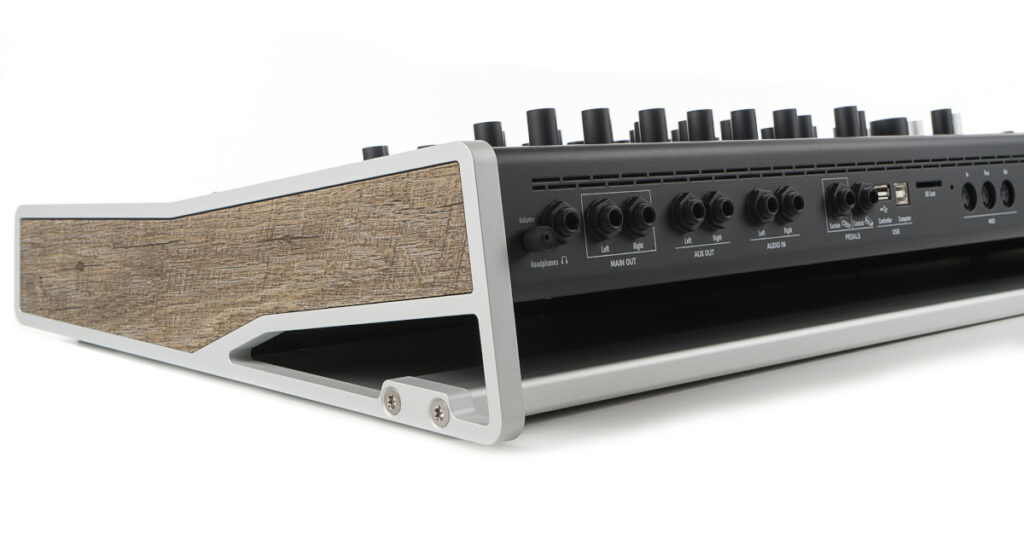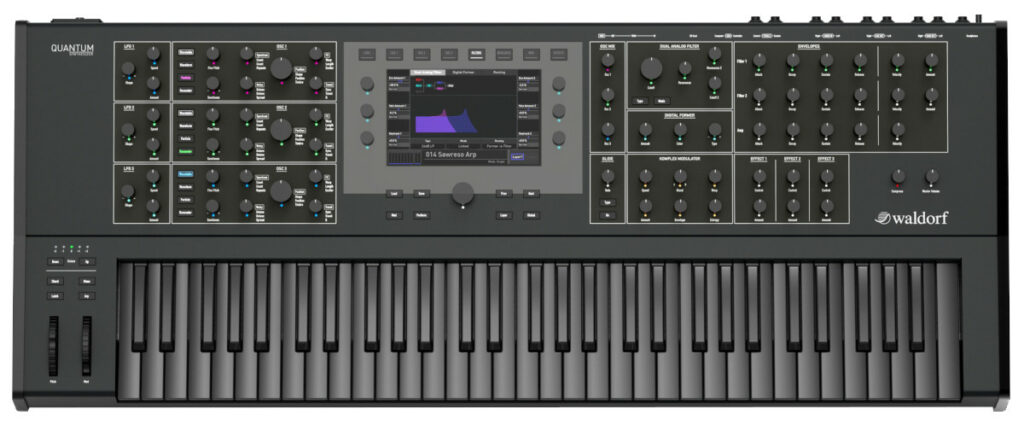Wavetable Synth Comparisons
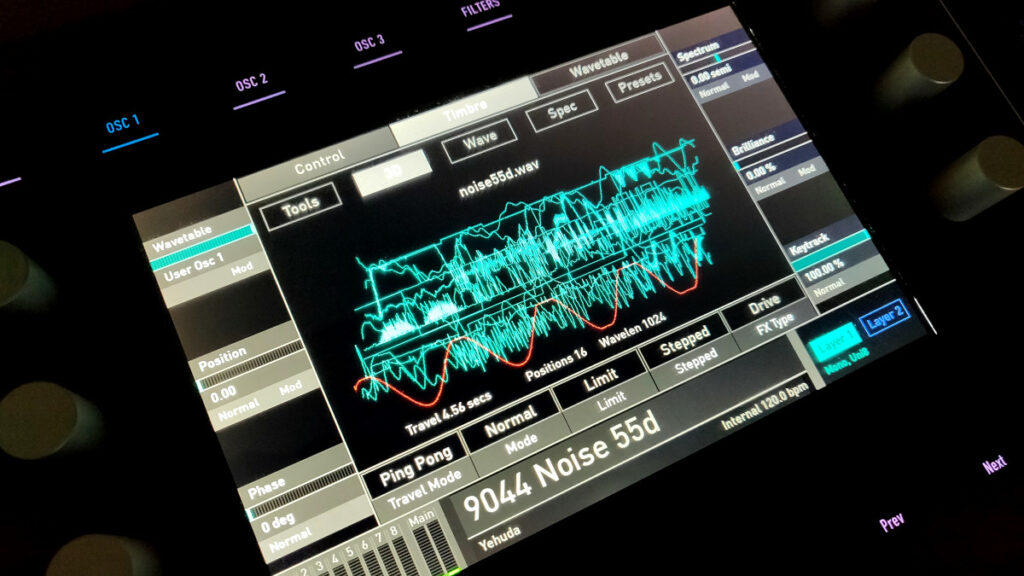
Trying to make sense out of all the wave* variant synthesizers out there today in 2023
Ever since the introduction of the Waldorf Quantum, wavetable synthesizers have been all the rage. And why not, wavetables are ultra-cool ways to significantly expand your sound palette. In addition to the Quantum and its siblings the Iridium Desktop & Iridium Keyboard in this wavetable synth comparison, there are the Groove Synthesis 3rd Wave, Waldorf M Desktop, Sequential Pro 3, Access Virus TI2, ASM Hydrasynth, Korg Modwave, [Korg Wavestate is not a wavetable synth], Modal Argon8, Nord Wave 2, Novation Peak, Novation Summit, and [UDO Super 6 is not a wavetable synth] synthesizers. Who knows, 2023 may yield even more wave* variant synthesizer announcements before it is done.
With prices over a wide range from $599.00 to $4799.99, what gives? Are these synths roughly similar? In a nutshell, no. By far, the Quantum/Iridiums are kings of the wavetable hill. Clearly there are other factors which determine value or desirability, such as build quality, keyboard size, other types of synthesis, sampling, touch screens or other interfaces, and so on. This post is only about the wavetable or wavetable-like synthesis in these synthesizers.
These are all great synths. Many of us would love to have all of them. There are differences and reasons why you might want to spend $599.99 or $4799.99.
Waldorf Quantum Keyboard
$4799.99 note: MK2 version just released
8 stereo voices. Hybrid digital/analog, true wavetable synth.
Pretty much the original wavetable synthesis, evolved from earlier PPG and Waldorf hardware and software synths. The Quantum comes with 68 wavetables of 64 waveforms each, and 16 wavetables of 14-377 waveforms for a total of 6013 individual waveforms. Plus, with user supplied wavetables, the sky is the limit. Not only are there many pre-made wavetables available, but you can also make your own custom wavetables in the Quantum from samples or in the voice synthesis function, and in 3rd party wavetable building utilities. Depending on the number of samples per waveform, wavetables with as many as 2,000 waveforms will work on the Quantum. There are also interpolation functions like smoothing or stepping.
Waldorf Iridium Keyboard
$3799.99
16 stereo voices. All digital, true wavetable synth.
This is a sibling of the Quantum. Same OS, same sound engine. The differences are really outside of the wavetable functions, which are the same as the Quantum. Notable differences aside from the obvious form factor differences, are there is no analog, no auxiliary outs, there is CV, and a 49 key Fatar semi-weighted polyphonic aftertouch keyboard.
Groove Synthesis 3rd Wave
$3795.00
24 stereo voices, Hybrid digital/analog, true wavetable synth.
The factory wavetables are 32 classic PPG-lineage waves plus 48 high-resolution custom waves. It also has a built-in sample-to-wavetable tool that create a 64 wave wavetable or user can import wav files with USB. The 3rd Wave doesn’t have the non-wavetable sound engines that the Quantum/Iridium have, or the kernel oscillators which can incorporate wavetables in amazing ways, but the 24 voices, sequencer and multi-timbral features are very impressive.
Waldorf Iridium Desktop
$2699.99
16 stereo voices. All digital, true wavetable synth.
This is a sibling of the Quantum. Same OS, same sound engine. The differences are really outside of the wavetable functions, which are the same as the Quantum. Notable differences aside from the obvious form factor differences, are there is no analog, no auxiliary outs, and there is CV and a 2nd type of sequencer with the pads (on/off, not for drumming).
Waldorf M Desktop
$2099.99
8 stereo voices (16 voices w/expansion avail 2022?). Hybrid digital/analog, true wavetable synth.
There are 96 factory wavetables and 32 user wavetables. The M has 2 wavetable oscillators, and both use a common wavetable. However, each oscillator can play a different waveform or set of waveforms within the common wavetable. The M uses wavetables with up to 64 waveforms per wavetable and 256 samples per waveform at 8-bit. There is no interpolating between waveforms in a wavetable. The upper three entries in the factory wavetables (positions 61, 62 and 63) consist of the classic analog type waveforms triangle, pulse and sawtooth. Until I know differently, I’m going to assume user wavetables are converted into this format as well.
Sequential Pro 3
$1999.00 Std – $2199.00 SE
2 stereo analog and 1 stereo digital, 3 paraphonic voices total
The 3rd oscillator is a digital oscillator that in addition to the classic waveforms saw, super saw, pulse, triangle and sine, has 64 digital wavetable slots with 16 waves in each slot with wave morphing; can function as an LFO for complex wavetable-based modulation. Wavetable slots 1-32 are factory supplied wavetables. Wavetable slots 33-64 are for user supplied wavetables as of the 1.1 firmware update. There is also a Sequential wavetable generator site to make an unlimited selection of wavetables for those user supplied slots.
Access Virus TI2
$1999.00-$2915.00
20+ stereo voices. Digital, true wavetable synth.
This is the only other wavetable synth available today that even starts on the path to approaching the Quantum/Iridium wavetable capabilities. It has 100 wavetables with 100 waveforms each.
ASM Hydrasynth
$599.00-1799.00
8 Stereo voices. Digital, true wavetable synth.
From a selection of 219 single waveforms, the Hydrasynth builds an 8 waveform wavetable, with up to 10 points of interpolation between them, for a total of 78 waveforms per wavetable. There are also 7 types of mutator waveshapers that you can use 4 of at a time. Does not load user supplied wavetables.
Korg Modwave
$799.99
32 stereo voices. Digital, true wavetable synth.
Newly announced, no availability date. This could very well be the best low-cost wavetable synth when it becomes available. Over 200 wavetables each containing up to 64 waveforms and loads user-supplied wavetables. Layer samples over wavetables from the included multi-gigabyte PCM library.
Korg Wavestate
$649.99
64 stereo voices. Digital, wave sequencing 2.0 synth.
This is not a wavetable synth. The Wavestate is an improved reiteration of the Korg Wavestation, a 1990’s wave sequencing synthesizer, which was derived from Sequential Circuits Vector Synthesis. Essentially, the Wavestate uses samples which can be longer than single cycle, and Pulse-code modulation (PCM), a method used to digitally represent the sampled analog signals. There are 6GB of PCM sounds, which I’m sure is a lot but not directly comparable to wavetable numbers. I don’t believe you can load user supplied PCM sounds.
Modal Argon8
$769.00-$969.00
8 Stereo voices. Digital, true wavetable synth.
There are 120 wavetables, split into 24 banks of 5 morphable wavetables. The wavetables are comprised of 5 single waveforms with 32 steps for each waveform for a total of 128 steps. The pure original waveforms that make up each wavetable can be found at 0, 31, 63, 95, and 127. Additionally, there are 32 static wavetable processors that can be applied to the 120 wavetables to give an array of permutations and new waveshapes. Does not load user supplied wavetables.
Nord Wave 2
$2899.00
48 voices, stereo or mono I am not sure yet. I think it is full digital.
There is no specific information at this time on the wavetable configurations that I know of. Nord so far has made the meaningless statement “A large number of advanced wavetables covering a wide range of tonal characteristics”. The ambiguity makes it sound like it would be the worst wavetable oscillator on the market, though I am sure it is a very nice synth, the wavetables are just a tiny bit of the flavor, not a core function. If I find more details, I’ll update this post.
Novation Peak
$1399.99
8 Stereo voices. Hybrid digital/analog synth, true wavetable synth.
There are 60 factory wavetables composed of 5 waveforms each. There are also 10 user wavetable slots composed of 5 waveforms each as well as an external application to import or create wavetables for these slots.
Novation Summit
$2299.99
16 Stereo voices. Hybrid digital/analog synth, true wavetable synth.
There are 60 factory wavetables composed of 5 waveforms each. There are also 10 user wavetable slots composed of 5 waveforms each as well as an external application to import or create wavetables for these slots.
UDO Super 6
$2999.00
6 stereo voices. Hybrid digital/analog synth, wavetables possible in future firmware, but not today.
I’m not sure why UDO calls oscillator 1 a ‘7-core super-wavetable main oscillator with waveform download’. At this point in time, the UDO Super 6 is NOT a wavetable synth. Osc 1 has 4 standard waveform slots (sine, sawtooth, square and triangle) that can load individual alternative waveforms. Additionally, Osc 1 allows you to load 16 individual waveforms into the alternative waveform slots. UDO will make a collection of waveforms available for download and regularly add to it. A future firmware upgrade might have a system in place for users to load their own waveforms, and wavetables may be implemented as well.
Summary
In online forums, every time another synthesizer gets announced with the word wavetable in its specifications somewhere, inevitably someone asks if it could be a Quantum/Iridium for less than $2k or even less than $1k. This of course is silly. The reason Quantum/Iridiums cost what they do, is not only because the development and production costs are that high, but the synth itself has no rival. Nothing comes close to it. As a Quantum owner, I can tell you the Quantum/Iridiums are a sound design dream, the interface is unmatched in the industry and it is worth every penny. If you want the best wavetable synth money can buy, with more functions and capabilities than any other, buy a Quantum or Iridium.
The Groove Synthesis 3rd Wave is also a really strong wavetable synth. In some ways it surpasses the Waldorf Quantum/Iridium and in other ways Waldorf surpasses it. They really have different strengths but both are clearly the major contenders of the wavetable hill.
Otherwise, the Hydrasynth and Argon8 would be today’s most affordable alternatives to experience basic wavetable oscillator capabilities. Soon, all the synths above will be available and you will have a number of options to get the flavor of wavetable synthesis that you need into your music.
Thanks!
-Yehuda
Useful Links
My Gear related pages
Updated periodically – Apple Mac Studio M1 Ultra
Updated periodically – Apple MacBook Pro M3 Max
Updated periodically – Apple Studio Display
Updated periodically – Sequential Prophet X
Updated periodically – Martin HD28E Acoustic Electric Guitar
Follow on Mastodon – TurtleIsland.social/@Yehuda
This page is subject to content updates/additions. If you think any content should be updated or added, please leave a private comment on Mastodon – TurtleIsland.social/@Yehuda.
